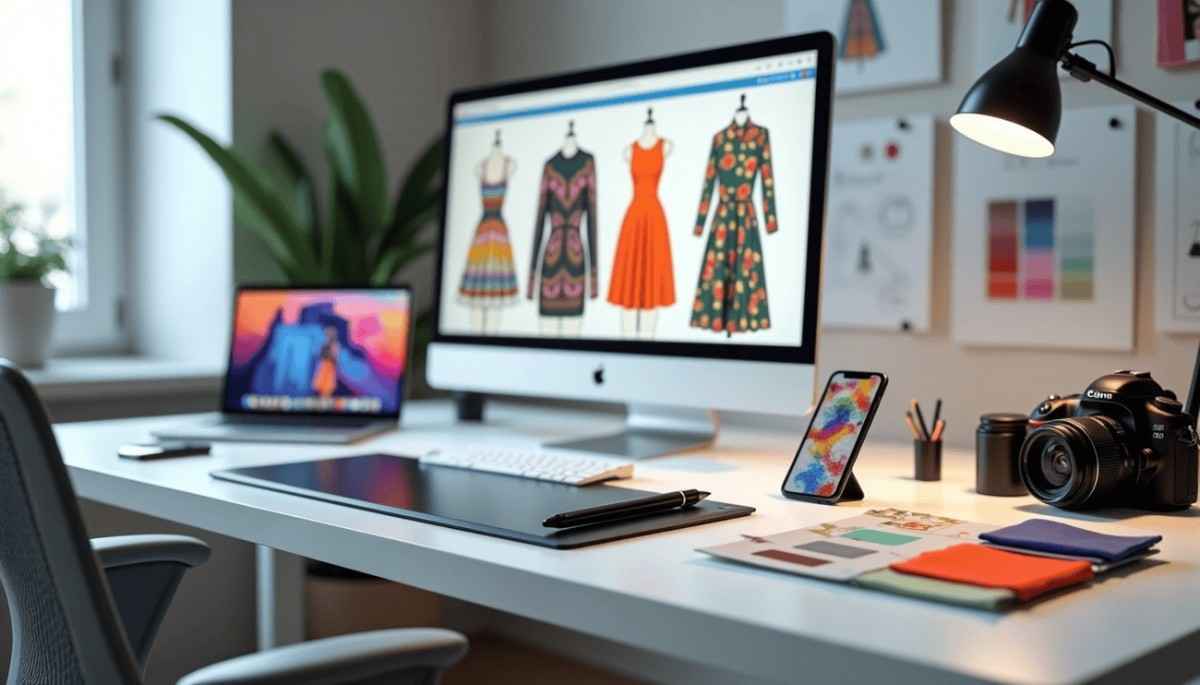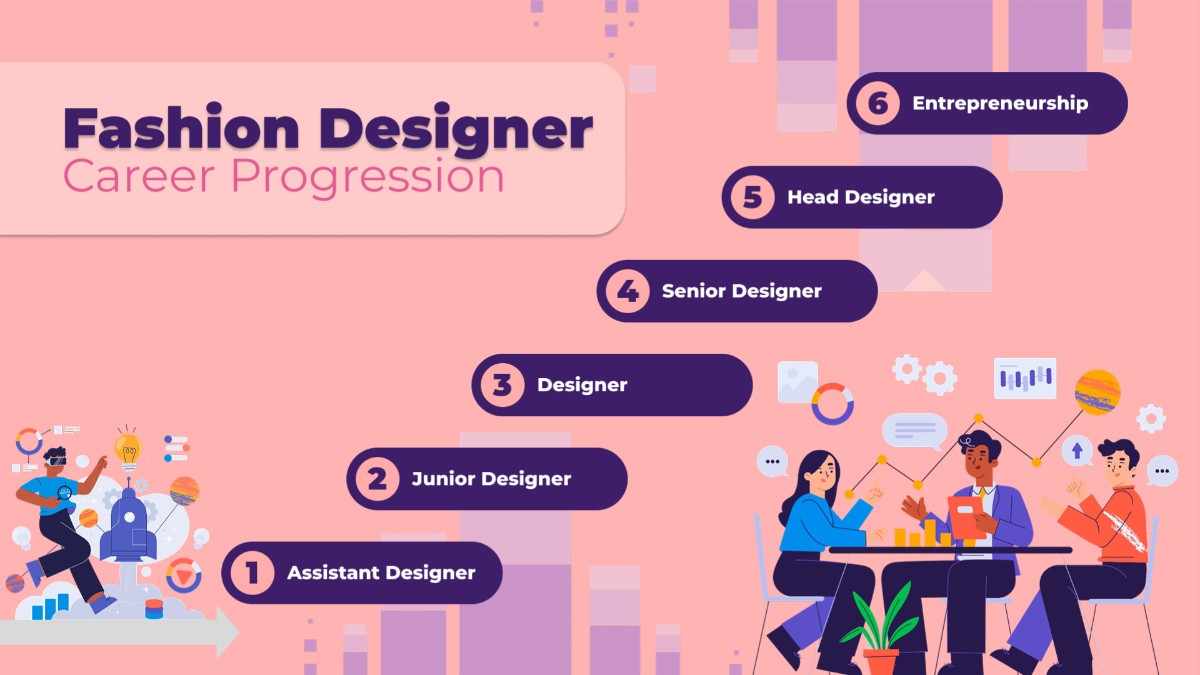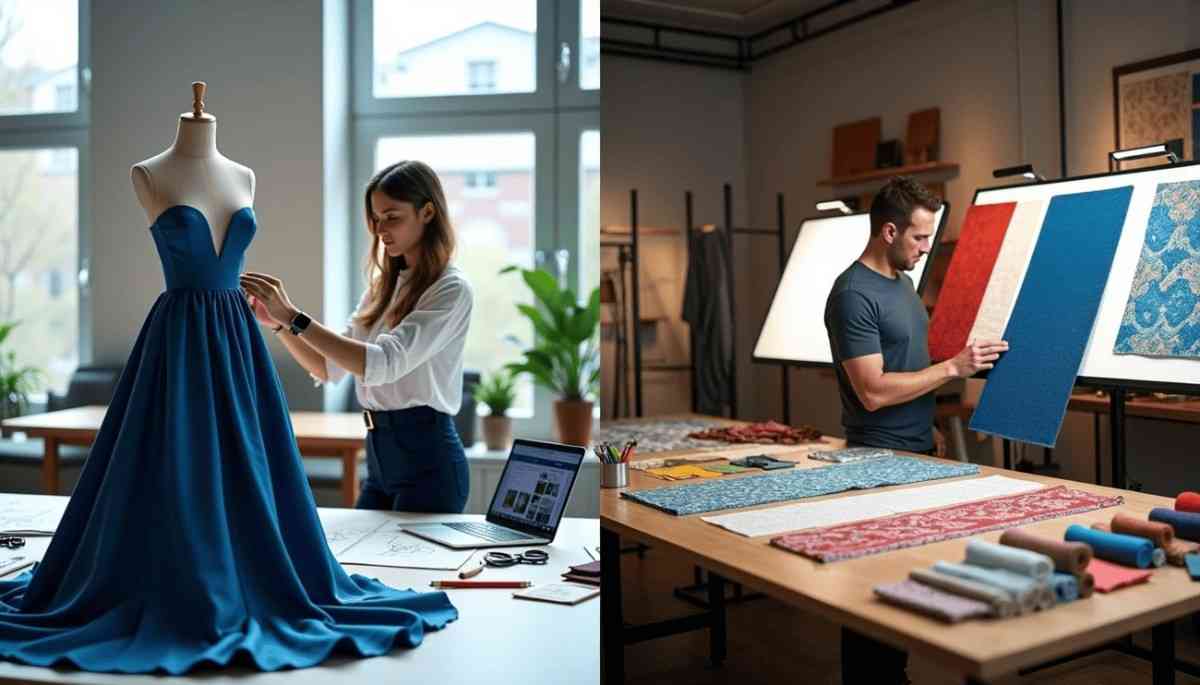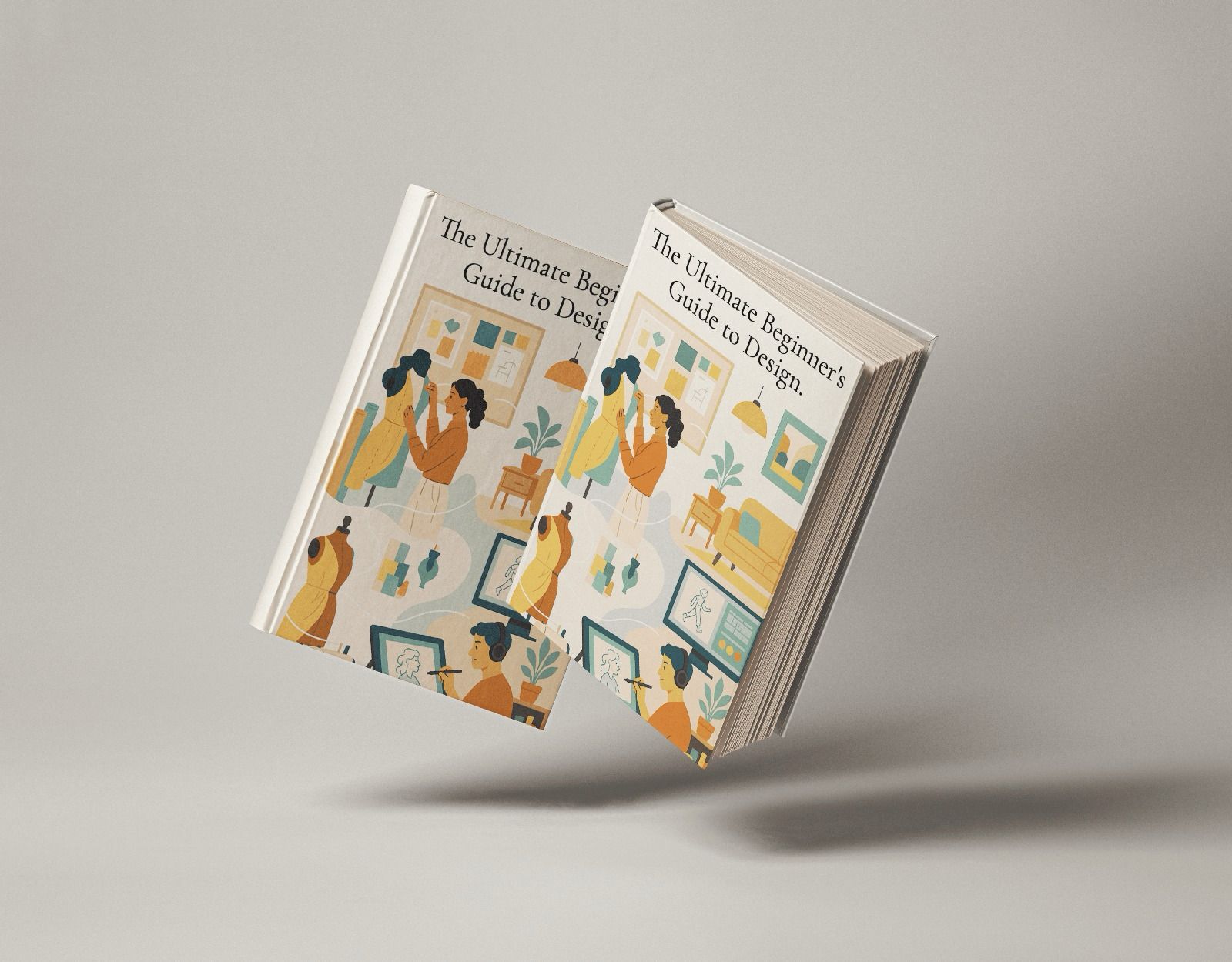How to Master the Fashion Design Process: From Sketch to Runway Success
Fashion designers must excel at illustration and know how to capture fabric’s movement and draping in their designs. The design process in fashion turns creative concepts into runway-ready garments through a well-laid-out approach.
Research shows the design process flows through several phases. These include research and inspiration, concept development, sketching, fabric selection, pattern making, and garment construction. The sort of thing I love about fashion’s design process is how designers draw inspiration from visual elements for their concepts. Success demands technical expertise in fashion illustration, couture sewing techniques, and design software proficiency.
Students who pursue fashion design find their trip exciting and life-changing that ended up bringing success in the fashion world. In this piece, we’ll walk you through each step to turn your creative vision into runway reality. You’ll develop your unique design voice and learn fashion’s business side.
Step 1: Start with Inspiration and Research
A successful fashion designing process starts with inspiration gathering and solid research. This original phase sparks creativity and sets the direction for your collection.
Explore fashion archives and street style
Great fashion designers find inspiration from many sources. Historical fashion archives are a wealth of garments and accessories from all eras. These archives help designers learn about past techniques, silhouettes, and details. Street style has become a powerful force in today’s fashion world. British fashion culture gave birth to street style, which connects deeply with youth culture and big cities. It celebrates personal expression instead of following mainstream trends. Top designers often visit museums, flea markets, and travel to cities. They capture authentic street fashion elements and turn them into fresh designs.
Use mood boards to organize your ideas
Visual organization of concepts becomes vital once you’ve gathered inspiration. Mood boards work as collages that shape brand identity before the design process begins. The best way to create a fashion mood board starts with picking a theme—based on color, style, season, or emotion. Next, collect inspiring images, fabric samples, color palettes, and text from magazines, social media, and your photos. Your fashion mood boards should tell one story rather than showing random ideas. Pinterest has changed how we work with mood boards. It lets teams easily collect and share visual inspiration across different locations.
Understand your target audience and market trends
Knowing your audience is essential in fashion design. Three main factors shape your target audience: demographics (age, gender, income), psychographics (interests, lifestyle, values), and behavioral traits (buying habits, fashion priorities). Designers use surveys, focus groups, and analytics tools to build detailed buyer profiles. Trend forecasting helps predict future fashion directions by looking at cultural changes, tech advances, and runway shows. This knowledge helps your designs appeal to potential customers and shine in the competitive fashion market.
Step 2: Sketching and Concept Development
Sketching turns your inspiration into real designs and serves as the visual language of fashion design. Your creative vision comes alive on paper during this vital phase.
Practice simple fashion illustration techniques
Fashion illustration starts with understanding proportions. A standard fashion figure usually stands 9 to 10 heads tall. This deliberately exaggerates the average human proportion of 7 to 8 heads. The elongation creates that elegant, runway-ready look in fashion drawings. You should focus on becoming skilled at basic anatomy first. Create balanced poses that show how garments move. Karl Lagerfeld could complete detailed fashion sketches in minutes with amazing precision.
Light pencil sketches help you capture silhouettes and proportions when you start developing your technique. You can try different materials as you grow more confident. Markers give you crisp lines, watercolors create soft transitions, and gouache produces opaque, rich textures. Quick sketches that focus on fabric drape and movement should be part of your daily practice.
Create cohesive themes for your collection
Your design trip needs strong concept development as its foundation. A fashion concept explains the design focus of a season. You can create unity by turning your research into a clear theme or esthetic vision. Mood boards are great visual tools. They gather images, colors, textures, and inspirations that define your collection’s mood.
Look at trends in silhouettes, design details, colors, and fabrics during this process. You don’t need to follow every trend, but seasonal elements can help new customers find your collection. The best collections tell a unified visual story through each piece.
Use digital tools for sketching and refinement
Fashion designers now have powerful digital tools at hand. Adobe Illustrator remains the industry standard to create fashion flats, tech packs, and detailed illustrations. Apps like Procreate offer customizable brushes and an easy-to-use interface that works well for conceptual sketching.
Fashion-specific apps like FashionDraw and Repsketch come with specialized features. You’ll find stitch brushes, fabric textures, and croquis templates. These digital platforms let you make quick changes, precise adjustments, and share work easily with teams. Traditional methods can’t match these advantages.
Step 3: Technical Execution – From Patterns to Sewing
You need technical skills to turn your fashion sketches into wearable garments. This vital phase connects your creative vision with actual execution.
Learn the basics of pattern making
Pattern making works like a blueprint for garment construction. The technique helps transform two-dimensional designs into templates that fit three-dimensional bodies. Start by creating basic block patterns that match body measurements directly. These foundational patterns become your starting point for all designs. Then, you can create various styles by learning to manipulate these blocks through techniques like dart manipulation. You can use both manual and digital methods—modern CAD software makes pattern creation precise and quick.
Experiment with draping on mannequins
Draping lets you work hands-on by shaping fabric directly on dress forms. This technique shows you how different materials behave in three dimensions. Your dress form needs marking at key body lines to work well. Next, anchor the fabric at strategic points like shoulder seams. Look at your work from different angles as you shape the fabric and adjust for balance and proportion.
Choose the right fabrics for your designs
Your fabric choice shapes how your design turns out. We group fabrics into three main categories:
- Natural fabrics (cotton, silk, wool, linen): These breathe well and have unique textures
- Synthetic fabrics (polyester, nylon, acrylic): These last longer and cost less
- Blended fabrics: These mix the best of natural and synthetic materials
Each fabric’s weight, drape, stretch, and texture helps you pick the right one for specific designs.
Master essential sewing and garment construction skills
Quality garment construction depends on good sewing techniques. You’ll need to learn different seam types including flat, French, and flat-felled seams. Each type serves different functional and decorative purposes. Shaping techniques like darts, pleats, and gathering help create three-dimensional forms from flat fabric. Good pressing matters just as much as stitching—you’ll spend more time cutting, marking and pressing than sewing.
Step 4: Final Touches and Runway Preparation
The final phase of fashion designing brings your collection to life. This phase focuses on perfecting fit, styling and presenting your creations to the world.
Fit and adjust garments for models
Models, garment technicians, and brand representatives come together in fit sessions to ensure garments look flawless on the runway. These sessions help assess how each piece drapes and moves. A properly fitted garment creates the foundation of every well-dressed look. Small alterations can change the overall esthetic dramatically. Fit models provide valuable feedback about comfort and movement that helps designers make adjustments before the final presentation.
Style complete looks with accessories and makeup
Each runway look needs thoughtful styling touches. Your collection’s theme should guide makeup artists and hairstylists through mood boards and inspiration images. Quality accessories can lift outfits to new heights. A mix of classic pieces and statement items creates balanced looks. Stylists take photos of final combinations to serve as reference guides for the backstage team on show day.
Plan the logistics of your fashion show
Fashion shows require precise organization and planning. A systematic labeling system helps track garment transportation and prevents losses. Your team should include stage managers, stylists, technicians, and security personnel who understand their roles clearly. Models need rehearsal time to practice walking to music while testing lighting and stage movements.
Document your work for your fashion design portfolio
High-quality photographs of your collection on models or dress forms showcase fit and drape beautifully. Your creative process shines through design elements like mood boards and fabric swatches. Both physical and digital portfolio versions will give you maximum exposure to potential employers or clients. Regular portfolio updates keep your work fresh by replacing older pieces with new designs that showcase your evolving style.
Conclusion
Becoming skilled at fashion design demands commitment to creative vision and technical execution. The path from sketch to runway shows how gathering inspiration builds the foundation for innovative designs. Fashion designers need strong illustration skills and technical knowledge of pattern making, draping, and construction.
Creating runway-ready garments involves several connected stages. Your research and inspiration guide the direction of your collection. Concept development and sketching turn abstract ideas into real designs. Technical execution brings these concepts to life with pattern making, fabric selection, and careful construction.
Successful fashion design strikes a balance between artistic expression and practical needs. Your unique design voice shines when you know your target audience and stay true to your creative vision. Technical skills ensure your garments fit well and stay intact when worn.
Fashion design blends art, craft, and business seamlessly. A strong portfolio becomes vital to showcase your talents. It also helps to style complete looks with accessories and makeup that show your detailed understanding of fashion presentation.
This piece aims to help you direct your way through the ever-changing world of fashion design confidently. These simple steps provide a framework for success, whether you’re new or want to improve your process. Note that every famous designer started with basic skills and love for creating beautiful garments. Your commitment to each phase of the fashion design process will lead to your own soaring win on the runway.





